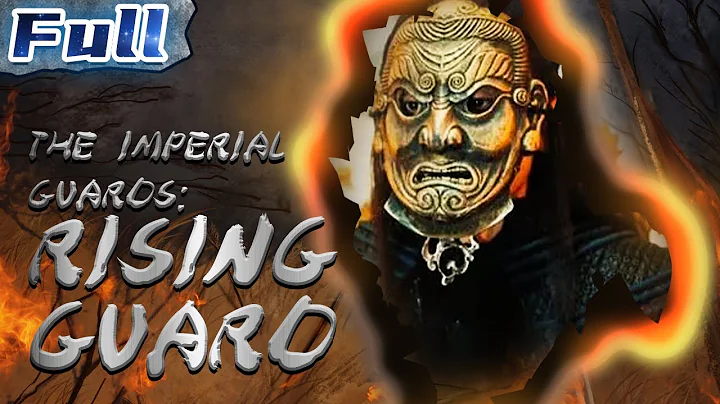"Since then, everyone has been lifted up, hoping for virtue and returning home."
["The Inscription of King Zhao of Anlu in Qi"· Shen Yue ( Southern Liang )]
Coming from the Empty Kingdom
Chongzhen Sixteenth Year/ Chongzhen On the ninth day of August in the eighth year of Germany (AD 1643), Huang Taiji died suddenly in Qingning Palace in Shengjing.
The powerful contenders for the throne were Haoge and Dorgon . After a series of Manchu and Qing banner contests, Huang Taiji's nine sons Fulin ascended to Shengjingdu on August 26th. The antler throne in Gongdian Palace became the emperor's throne, and it was changed to Yuan and Shunzhi the following year. Jilharang served as the first regent, and Dorgon served as the second regent.
Because Jierhalang knew how to be humble, Dorgon eliminated the threat of Hauge forces, and the power was almost concentrated in Dorgon.
The time came to early April of the following year (1644). After the Manchu Qing Dynasty learned that Dashun had occupied Beijing and the Ming Dynasty had fallen, they poured out of the country.
"(Qing Dynasty envoy Zheng Mingshou) also said: 'In a few days, the nine kings heard that China was sitting empty. Within a few days, they hurriedly gathered their troops and marched. All men under seventy and over ten years old joined the army. The judgment of success or failure, In this move, the minister asked: "What is the so-called empty seat?" He said, "It was trapped by local thieves." The so-called "Benzuo" seems to refer to the ninth day of April. , Dorgon, Prince Duduo of Yujun, Prince Azige of Wuying, etc., led two-thirds of the Manchu and Mongolian Eight Banners soldiers and the entire Han army to "defeat the Ming Dynasty".
The route at this time was still recommended by Hong Chengchou , and we were planning to enter Beijing from Jizhou and Miyun.
The so-called empty country came, how many troops did the Manchus bring?
If you want to understand how many available troops Dorgon has, you must first understand the Eight Banners system of the Qing Dynasty. In the 29th year of Wanli in the Ming Dynasty, Nurhachi reorganized the system and divided it into Niulu'ezhen, Jiala'ezhen, and Gushan Ezhen is the leader. At first, yellow, white, red and blue flags were set up to form four flags.
In the 43rd year of Wanli , the four flags of yellow, white, red and blue were added, and the eight-banner system was established. The Niulu organization refers to the fierce restraint of the Jurchens and stipulates that 300 people are one Niulu, 5 Niulu is one Jiala, and 5 Jiala is one Gushan. They are respectively Niulu Ezhen, Jiala Ezhen, and Gushan E A true leader.
Many people have a misunderstanding here. They think that in Eight Banners , Eight Banners of Manchuria, Eight Banners of Mongolia and Eight Banners of Han Army are relatively independent organizations. This is wrong. They are a whole. Each of the Eight Banners has three military commanders, one each for Manchuria, Han Army, and Mongolia. Each Manchu military commander has five counselors and commanders, and each Han military commander has five counselors and commanders. , each Mongolia has two counselors and leaders.
So how many troops did the Manchus have before the decisive battle? Before entering the Pass, the Eight Banners of Manchuria had a total of 309 auxiliary leaders, and 18 were half-divided auxiliary leaders; the Mongolian army had 117 auxiliary leaders, and 5 half-divided auxiliary leaders; the Han army had 157 auxiliary leaders, and 18 half-divided generals. Half points and 5 collars. The Eight Banners had a total of 583 Manchu, Mongolian and Han auxiliary leaders, and 28 half-minor auxiliary leaders.
Zuo Lingniu Lu Zhang Jing's Chinese translation. Each assistant leads about 150 strong men. The actual combat strength of
is 583*150+28*75=89550 people. When
started, Manchuria and Mongolia among the Eight Banners accounted for two-thirds, 426*150+23*75=45625*2/3=43750+(89550-45625)=87675 people. Later, he got Wu Sangui . According to the letter requesting reinforcements, the military strength was adjusted accordingly. It can be basically judged that the Manchu Qing's military strength was around 80,000 to 90,000.
According to historical records: the number of men under the Eight Banners system according to statistics in the first five years of Shunzhi's entry into the Guan Dynasty was 80,000 Manchu and Mongolian men (including the total number of armored men, remaining men, and coated men, of which about 2/3 were Eight Banners Manchu , 1/ 3 is the Eight Banners Mongolian ), and there are 340,000 Han people (about 50,000 of them are the Eight Banners Han army , and the rest are farmers). The Dingkou ratio under the Eight Banners system in the Qing Dynasty is generally 1:4. Therefore, before entering the customs in 1644, there were about 400,000 men (including more than 100,000 soldiers), and the total population was 1.5-2 million people.
You really came from an empty country!
Excerpt:
1. The success or failure of the Shanhaiguan War is analyzed from a perspective today. Some people will always criticize it as God’s perspective, but now judging from the clues in the history books, isn’t the courage of the Manchu and Qing Dynasties worthy of praise? This kind of Coming from an empty country is not just about plundering, it really requires a belief in victory!
2. At this time, the Manchu Qing Dynasty had not received Wu Sangui's letter asking for help. The army marched to Wenghou (today's Fuxin ) and went straight to Jizhou and Miyun. After receiving the message again, they marched three hundred miles straight to Shanhaiguan. The war is about to break out!









![The Fall of Emperor Yuan Shih-kai [Eng Sub] 蔡锷北伐袁世凯 - DayDayNews](https://i.ytimg.com/vi/oD-eJJrOBKE/hq720.jpg?sqp=-oaymwEcCNAFEJQDSFXyq4qpAw4IARUAAIhCGAFwAcABBg==&rs=AOn4CLBYxwGiLYHlCD13YEpLZOK0GgeD4A)





![[Full Ver.] N. Korea's nighttime military parade: New ICBM, Kim Jong-un's daughter - DayDayNews](https://i.ytimg.com/vi/VbhJalwmGq4/hq720.jpg?sqp=-oaymwEcCNAFEJQDSFXyq4qpAw4IARUAAIhCGAFwAcABBg==&rs=AOn4CLBIE-3jJUUIZ6tjQ4ioLUnQBC52rQ)








